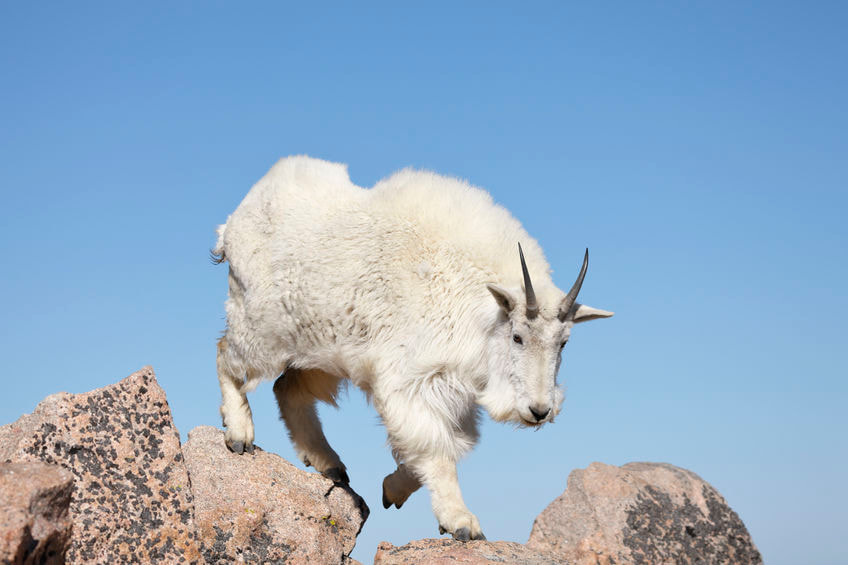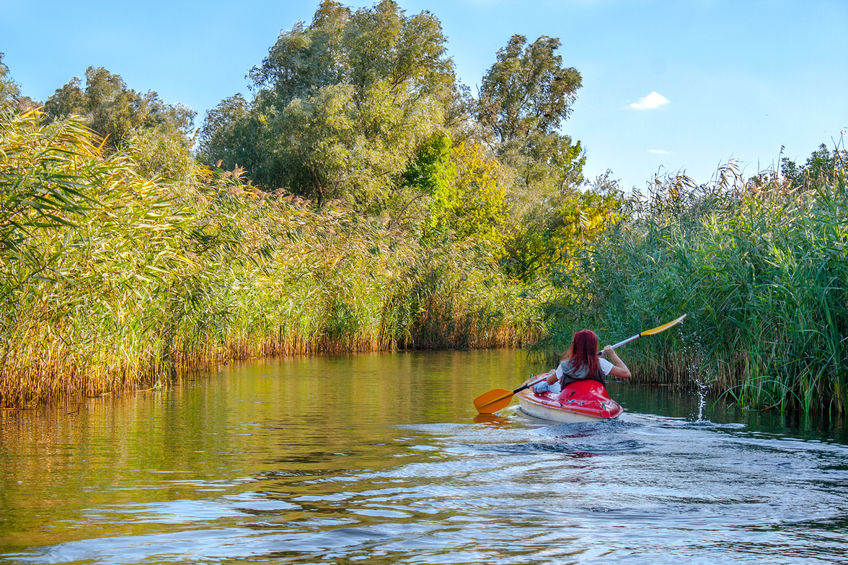|
Easiest way to sift through thoughts that work for or against you I love super-simple ways to bring in greater ease, clarity, and joy. Since our thoughts shape our reality—and also show us how we’re viewing, holding, and moving through our reality—I love looking at thoughts to notice, very simply … Is this an upstream thought or a downstream thought? I got this from Abraham-Hicks. Is this thought taking me toward stress, fear, disempowerment, a sense of doing it wrong [or not doing enough, or working with the cards stacked against me, or keep filling in the blank to match what you steer yourself into]? Or is it taking me toward greater ease, trust, joy [or empowerment, or a sense of potential & possibility, or keep filling in the blank to match what you prefer]? Upstream or downstream? Am I riding the current to get to where I want to go with ease and efficiency? Or am I pushing against the current and costing myself a whole lot of wasted energy as I feel increasingly exhausted and lose any sense of well-being? And note that thoughts, much like potato chips, aren’t really interacted with one at a time. So in a series or sequence of thoughts, you might notice what’s upstream and what’s downstream. I can’t seem to get ahead. Upstream thought. I work so hard but it’s not really getting me anywhere. Upstream. I’m really just bad at the whole money thing. Upstream. Things really aren’t great in my field for anyone right now. Upstream—maybe thinking about pointing downstream, because now it’s less personal and contains less self-blame, but it has a victim component and isn’t exactly hopeful or empowering. Still, maybe you’re trying to tilt the paddle the way the instructor showed you works better. … I’m really trying. Upstream (maybe masquerading as downstream, but nope, still no). I just can’t seem to get ahead. Squarely back upstream. Um, so how do you get downstream from there? The problem with those potato-chip thoughts is, you keep grabbing the next one, the next one, the next one, and there’s a momentum that revs up. It gets harder and harder to go in the other direction.
So just reach. One thought at a time. Reach for the easiest downstream or canoe-shifting or oar-reposition thought you can see to reach for. I’m actually okay right now. Definitely heading the right direction. My basic needs are met. Downstream. I’m actually well. Downstream. I usually like my life. Angling a bit upstream, especially if the focus is on usually, but not bad, not bad. I’ve really come a long way with money stuff. Downstream. I’m doing better than ever. Downstream. I wasn’t sure I could pay off that credit card debt, but I totally did. Downstream. Of course, I still have no savings. Upstream! I’m fortunate to have a job that many would be happy to have. Okay, heading roughly in the right direction. Especially if you’re not feeling that in any way that resembles, I really should be grateful or this job, too, will be snatched away. (Ay, the gratitude thing can be slippery.) I actually like my job. Downstream. They’re not paying me what I’m worth, though. Upstream. I mean, I often love my job. Downstream. And I’m getting better and better at what I do. Downstream. That could actually mean more money. Downstream. Someday. Um … But with my luck-- Upstream! I did get a raise last year. Downstream. From there, you could go upstream (So Goddess knows how many years till the next one) or downstream. You can always next go upstream or down with your next thought. Let’s string together a bunch of downstream thoughts, because that’s where I want to invite you to take yourself when you do this at home. (Go ahead! Boldly try this on your own at home!) So between that and the debt I paid off, it really is better. And there are more ways to make money besides raises. And in the meantime, I love my life. I don’t need to figure this money thing out right now. I don’t even need to give it my focus. I’m open to inspired ways to bring money in and feel good about what goes out. I’ve gotten so much better at things I used to think I’d never do better with [even better, name one or more specific things], so I can get better at money too. Money, to the Universe, is no thornier or trickier than any other topic, and I’m willing to keep shedding old ideas about my identity as hopelessly money-challenged. Nothing is hopeless. Everything is hopeful. In fact, things work out for me. Things are always working out for me. It really helps to do this out loud or on paper, not in that morass of the mind. Write down your thoughts about money (or whatever) so you can see a sequence in black and white. Do that, then go back and ask about each one, Upstream or downstream? Or ask someone you love to hear you speak your thoughts out loud, and do that one sentence at a time. Have them simply ask after each sentence: Upstream or downstream? And you answer. Say a few typical thoughts, and once you get the feel of what you’re doing to yourself with your upstream line of thinking, consciously head downstream! With a little practice, you could get really good at cultivating downstream thoughts, and living the downstream life! Love & blessings, Jaya
0 Comments
 (Would you, could you believe that it’s supposed to be easy?) I just found a little note I wrote for myself with an Abraham-Hicks quote that struck me: “The path of least resistance is also the path of greatest joy, greatest clarity, and the most fun!” Abraham’s path of least resistance is a crazy-simple concept: You watch for and find the easiest, most effortless spot to next place your foot. Don’t see the whole picture? Don’t have a start-to-finish plan? No problem. Find your next step, knowing that’s enough. Take the easiest step you have access to. You can do it tired, scared, confused. Point yourself roughly in the right direction (as I talk about in part 4 of Scooch!) and step forward, wherever your foot can land without some big leap or forceful stomping. You can do it with curiosity instead of dread; you can stay tuned for the guidance rather than fear you’ll get it wrong. You can trust yourself to course-correct as you go. It’s always okay to find you’re in resistance. Watch it dispassionately, compassionately. Then find your point of least resistance, and step there. Rinse and repeat; rinse and repeat. You’ll see and feel the resistance melt away. You’ll find the momentum builds as you go, often surprisingly swiftly. To proceed along the path of least resistance, start by noticing when you’re in resistance. In your body, resistance can feel like
You’re in resistance when you're
It also helps to be clear about the signs that you're on a path of least resistance:
How to follow the path of least resistance: All you need to do is gingerly pick your way along the unknown way, one step at a time, simply finding your next point of least resistance. What’s the easiest way to go that feels like it’s in the right direction? Forget the whole picture. Don’t call this one step a drop in the bucket. Your point of least resistance simply gives you access to movement. One step, and another, and the next, until you’re moving so well, you forget you didn’t know how to do this. You’ll course-correct as you go, so don’t worry about whether you’re heading just the right way. You’re meant to build and ride momentum. Hey, it’s not just that the path of least resistance will get you to where you’re going in the most effortless way. Remember the quote I began with from Abraham-Hicks? “The path of least resistance is also the path of greatest joy, greatest clarity, and the most fun!” So when it feels like that … you’re on it! Love & blessings, Jaya Note that an earlier post on least resistance approaches these concepts from another angle. Want to get on with it? Find your point of least resistance.
Hey, have you figured out yet that it’s just resistance when you keep putting off what you say you want to do or what you think you should be doing? It really helps to know it as resistance. It helps to call it resistance. Otherwise, you have to call it lazy or lame. You might get into self-scolding or even self-loathing. And I bet you know that’ll never get you where you want to go. In fact, judging your resistance is more likely to increase it. So what if, instead, you noticed the resistance and just got okay with it—human thing that it is, for human being that you are. What if you declared that you’re in no rush, you’ll get there in your own good time, and you’re simply going to head that way through your point of least resistance? Ah, then you get to actively enjoy the binge-watching (and notice when it’s not fun anymore, because enjoying it means it’s not fraught with shame or misery that keeps you stuck there). Or you get to appreciate prioritizing the easy task, and move swiftly and surely through the ease of the simpler, more obvious, more joyous thing that must also be done. As you feel good about working with ease, you get to increase feeling good in general. And from that place of feeling good, and having had some guiltless fun or checked off a to-do or two that cost you little, you might take a (satisfied, can-do) breath and go for the harder thing. Sound better? I’m giving you three examples to illustrate the point of least resistance, so check out the one or ones you’re most drawn to. Example #1 targets the Enneagram’s self-preservation instinct (self-prez to Enneagram geeks): getting yourself to the gym. Example #2 correlates with the sexual instinct: working up to leaving the relationship, or agonizing over the belief it’s really time to go (but you don’t or can’t). Example #3 addresses the social instinct: wanting to rev up your connections or grow your circles. After reading your preferred example(s), drop down to the subhead “More implications of the point of least resistance.” # 1: What if, instead of judging yourself for not getting to the gym, you welcomed yourself to the human race and considered how very many people struggle with how to work in working out? What if you stopped calling it lazy and instead took a look at the actual issue for you? This could lead you right to your point of least resistance. You might be inspired to get an accountability buddy, try a new modality that looks more fun or doable right now, or find a YouTube guide or a class. You might start simply walking or biking more to get from point A to point B. You might determine that a few good stretches could change how you feel in your body and start taking two-minute stretch breaks when that scrunched-up-at-the-desk sensation creeps in. So much is possible! But not when you get trapped in resistance, and not when you see a point of least resistance but don’t grab it because you treat it like an evil (or at least believe that you’re wimping out, not doing it right, not doing enough). # 2. What if, instead of forcing yourself to walk out of the relationship you suspect you’ve outgrown, or even forcing a stay-or-go decision, you located your point of least resistance? What if you gave yourself full permission to hang out there for a while and see what comes next? Your point of least resistance here could be about spending more time alone or with friends. It could involve making a pact (with your partner or yourself) to have fewer arguments (walk away at the first whiff!) and spend more time in appreciation or admiration, while putting aside stuff-to-work-out or what-to-do-next for a time. Or it could be working on passion and connection in every other realm of life while allowing, in the relationship realm, the relief of simplicity and neutrality (but not misery and criticism, at least on your end)—then you could see where that takes you. # 3. What if, instead of telling yourself you’re hopeless at the social thing (as you wish for more of it), you told yourself that growing your connections is a good intention to hold and play with? There’s already less resistance in that. Then you might consider what feels manageable and aims you roughly in the right direction without some great overhaul of either character or habits. It could be going out to eat alone, even with a book or device for starters, or going to the movies solo or with a friend or partner and appreciating that others are about, having a similar experience. Or you might join a class so that you have a repeating experience of gathering with a fixed population on a shared point of interest in shared space. Your point of least resistance might even be an online group! It might involve self-permission to join something in silence, allowing yourself to begin by focusing on your inner experience. It might be to find a buddy to do something you’ve never done or want to do more of (salsa or karate? wine tastings or vegan cooking? choral singing or meditation?)—something that happens to be done with or among other human beings. More implications of the point of least resistance You won’t grow your social, sexual, or self-prez self from a place of feeling like you’re perpetually off your game (or like it’s a game you’re not remotely equipped to play). But you can grow any one of those by stepping from one point of least resistance to the next, and just see what gives as you allow yourself to step onward, curious about what’s possible, open to what reveals itself. I cannot say enough about my love of the point of least resistance (and how much it’s helped my clients and program participants). It’s all about stepping in where it makes the most sense because it feels best and easiest and most aligned with where you are right now. This concept is super compatible with the idea of scooching (you may already know how much I love to Scooch!). The point of least resistance came to me through Abraham-Hicks, who teaches that it’s also your point of greatest alignment, most fun, and greatest joy. I keep playing with it and loving the experience and results. It’s so much kinder than all the forcing and straining or the judging and shutting down. I invite you to it (and you can learn about it in my beautiful and now beautifully cleaned-up and polished Expansion audio program). Love and Blessings, Jaya Note that my post Force Nothing adds to the ideas presented here on least resistance. |
Categories
All
|





 RSS Feed
RSS Feed